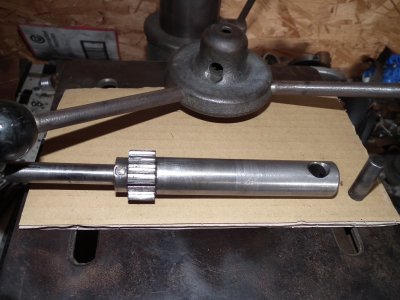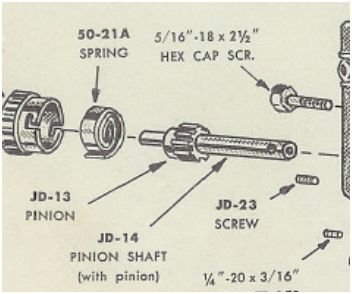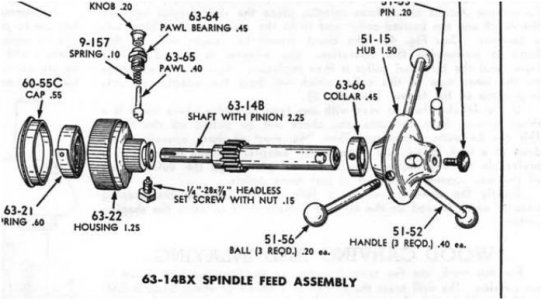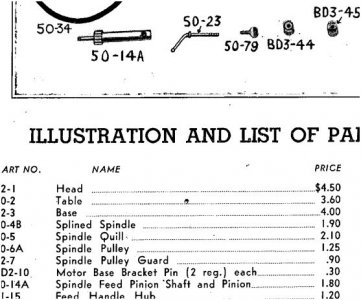- Joined
- Sep 20, 2012
- Messages
- 560
Engineering anomalies...need enlightenment please explain.
Pondering on how two gear teeth became broken on this shaft, it seemed to me that there was a strange miss-match between the two pins involved.
On one end the quill feed handle is held on by a huge pin, but the gear is held on by a relatively tiny taper pin which is obviously up to the job as it hasn't failed under obvious abuse.
So my question is what is the point of the huge pin the other end, is this just to look butch and strong to impress buyers, or is it a necessity?

All a bit strange to me...suggestions welcome..
More anomalies to follow
Bernard

Pondering on how two gear teeth became broken on this shaft, it seemed to me that there was a strange miss-match between the two pins involved.
On one end the quill feed handle is held on by a huge pin, but the gear is held on by a relatively tiny taper pin which is obviously up to the job as it hasn't failed under obvious abuse.
So my question is what is the point of the huge pin the other end, is this just to look butch and strong to impress buyers, or is it a necessity?

All a bit strange to me...suggestions welcome..
More anomalies to follow
Bernard





